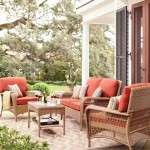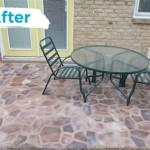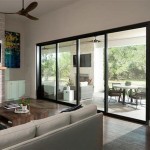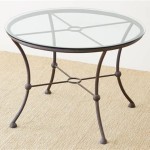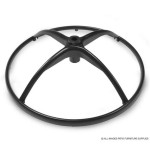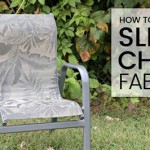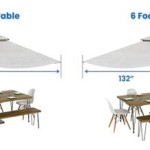Is Patio Furniture Waterproof? Understanding Water Resistance and Protection
The selection of patio furniture involves careful consideration of various factors, including style, comfort, and durability. One of the most crucial considerations, especially for individuals residing in regions prone to rainfall or high humidity, is the water resistance of the furniture. The term "waterproof" is often used loosely, but it's important to understand the nuances of water resistance and how different materials and construction methods affect a piece of furniture's ability to withstand moisture. This article aims to provide a comprehensive understanding of the water resistance of patio furniture, exploring different materials, levels of protection, and maintenance strategies to ensure longevity.
The distinction between "waterproof" and "water-resistant" is fundamental. Waterproof materials are impervious to water, meaning water cannot penetrate them under any conditions. Water-resistant materials, on the other hand, can resist water penetration to some degree, but they are not entirely impenetrable, particularly under prolonged exposure or high pressure. Most patio furniture marketed as waterproof is, in reality, water-resistant. Truly waterproof materials are often impractical for outdoor furniture due to issues such as breathability and cost.
Understanding Common Patio Furniture Materials and Their Water Resistance
The primary material used in patio furniture construction significantly impacts its water resistance. Different materials possess varying levels of natural resistance and require different levels of additional treatment to effectively withstand moisture.
Wood: Wood is a popular choice for patio furniture due to its aesthetic appeal and natural warmth. However, its susceptibility to water damage is a significant concern. Different types of wood offer varying levels of resistance. Teak, cedar, and redwood are naturally more resistant to moisture, rot, and insect infestation due to their inherent oils and dense grain. These woods are often used in higher-end patio furniture. Softer woods, such as pine, are more susceptible to water damage and require treatment with preservatives and sealants to enhance their water resistance. Regardless of the wood type, regular maintenance, including cleaning and re-application of protective finishes, is crucial to prevent water damage, warping, and cracking.
Metal: Metal is another common material used in patio furniture. Aluminum, stainless steel, and wrought iron are all used, each with its own strengths and weaknesses in terms of water resistance. Aluminum is naturally rust-resistant, making it a good choice for outdoor furniture. However, it can corrode over time, especially in salty or acidic environments. Powder coating provides an additional layer of protection against corrosion and scratches. Stainless steel is highly resistant to rust and corrosion, but it can be more expensive than aluminum. Wrought iron is strong and durable but is susceptible to rust if not properly treated. Regular painting or powder coating is essential to protect wrought iron furniture from moisture damage. The joints and connection points in metal furniture are particularly vulnerable to water penetration and should be carefully inspected and treated to prevent rust and corrosion.
Plastic and Resin: Plastic and resin furniture offers excellent water resistance and is often a more affordable option than wood or metal. Polyethylene and polypropylene are commonly used plastics that are naturally waterproof and resistant to fading and cracking. Resin wicker, made from synthetic fibers, is a popular alternative to natural wicker, offering similar aesthetic appeal with superior water resistance and durability. These materials are easy to clean and require minimal maintenance. However, plastic and resin furniture can become brittle or fade over time, especially when exposed to direct sunlight. UV inhibitors are often added to the plastic during manufacturing to mitigate this issue.
Fabrics: Patio furniture cushions and upholstery are often made from fabrics that are treated to repel water. Solution-dyed acrylic fabrics, such as Sunbrella, are highly resistant to fading, mildew, and water damage. These fabrics are designed to withstand prolonged exposure to the elements. Polyester fabrics are also commonly used, often with a water-repellent coating. However, these coatings can wear off over time, requiring re-application. It is important to note that while these fabrics are water-resistant, they are not entirely waterproof. Prolonged exposure to heavy rain can still lead to moisture penetration, requiring prompt drying to prevent mildew and mold growth. Using breathable waterproof covers when the furniture is not in use can further protect the cushions and upholstery.
Levels of Water Resistance and Protective Measures
The level of water resistance required for patio furniture depends on the climate and the extent to which the furniture is exposed to the elements. Understanding the different levels of protection and the measures that can be taken to enhance water resistance is crucial for selecting and maintaining patio furniture.
Water-Repellent Coatings: Water-repellent coatings are commonly applied to fabrics and wood to provide a temporary barrier against moisture. These coatings work by causing water to bead up and roll off the surface, preventing it from penetrating the material. However, water-repellent coatings are not permanent and will degrade over time with exposure to sunlight, rain, and abrasion. Regular re-application is necessary to maintain their effectiveness. Products specifically designed for outdoor furniture should be used, following the manufacturer's instructions carefully.
Sealants and Preservatives: Sealants and preservatives are used to protect wood from water damage, rot, and insect infestation. Sealants create a barrier that prevents water from penetrating the wood, while preservatives contain chemicals that inhibit the growth of fungi and bacteria. These treatments are particularly important for softer woods that are more susceptible to water damage. The type of sealant or preservative used will depend on the type of wood and the desired level of protection. It is important to choose products that are specifically designed for outdoor use and that are compatible with the wood's finish.
Powder Coating: Powder coating is a durable and long-lasting finish that is often applied to metal furniture to protect it from rust and corrosion. The powder coating process involves applying a dry powder to the metal surface and then heating it to create a smooth, even, and protective layer. Powder coating is more resistant to scratches, chipping, and fading than traditional paint finishes. It also provides excellent water resistance, making it a good choice for outdoor furniture that is exposed to the elements. Inspecting the powder coating regularly for any signs of damage and addressing them promptly is important to prevent rust from forming underneath.
Furniture Covers: Using furniture covers is one of the most effective ways to protect patio furniture from water damage. Waterproof and breathable covers provide a barrier against rain, snow, and sunlight, preventing moisture from penetrating the furniture. Breathable covers are important to prevent condensation from building up underneath, which can lead to mildew and mold growth. The covers should fit snugly to the furniture to prevent them from being blown off in the wind. Regularly cleaning the furniture before covering it and airing out the covers periodically will also help to prevent moisture buildup. Selecting covers made from UV-resistant materials will help to prolong their lifespan.
Maintenance and Care for Water Resistance
Even with water-resistant materials and protective measures in place, regular maintenance and care are essential to prolong the life of patio furniture and maintain its water resistance. Neglecting maintenance can lead to premature deterioration and costly repairs or replacements.
Regular Cleaning: Regular cleaning is crucial to remove dirt, debris, and mildew that can accumulate on patio furniture. Using a mild soap and water solution and a soft brush or cloth is generally sufficient for cleaning most types of furniture. Avoid using harsh chemicals or abrasive cleaners, as these can damage the finish or fabric. Rinsing the furniture thoroughly after cleaning and allowing it to dry completely is important to prevent water spots and mildew growth. For fabrics, spot cleaning stains promptly will help to prevent them from setting in. Cushions should be stored indoors or in a waterproof container when not in use, and they should be aired out regularly to prevent moisture buildup.
Proper Storage: Proper storage during the off-season is essential to protect patio furniture from the elements. Storing furniture indoors in a dry, well-ventilated area is the best option. If indoor storage is not possible, covering the furniture with waterproof covers and elevating it off the ground can help to prevent water damage. Disassembling furniture before storing it can also help to save space and prevent damage. Cleaning the furniture thoroughly before storing it and allowing it to dry completely is important to prevent mildew and mold growth. Regularly checking on the stored furniture to ensure that it remains dry and free from pests is also a good practice.
Addressing Damage Promptly: Addressing any signs of damage, such as rust, cracks, or tears, promptly will help to prevent further deterioration. Rust can be removed from metal furniture using a wire brush or sandpaper, followed by a coat of rust-resistant primer and paint. Cracks in wood furniture can be repaired with wood filler and sealant. Tears in fabric cushions can be patched or replaced. Ignoring these problems can lead to more extensive and costly repairs in the future. Consulting with a professional furniture repair specialist can be helpful for more complex repairs.
In conclusion, while the term "waterproof" may be used in marketing, patio furniture is generally water-resistant, and its ability to withstand moisture depends on the materials used, the level of protection provided, and the maintenance performed. Understanding these factors is essential for selecting and caring for patio furniture that will last for many years.

Is Patio Furniture Waterproof 4patio Com

Is Patio Furniture Waterproof Ions

How To Waterproof Outdoor Furniture The Easy Way Maison De Pax

Waterproof Outdoor Furniture With Modern And Sophisticated Designs

Waterproof Outdoor Furniture With Modern And Sophisticated Designs

Your Complete Guide To Waterproof Outdoor Cushions Fig Leaf

An Easy Way To Waterproof Patio Furniture The Diy Playbook

Is Bramblecrest Garden Furniture Waterproof

Patio Furniture 2024 Waterproof Outdoor With Storage China Made In Com

Sunrinx 7 Piece Outdoor Patio Furniture Set With White Chushions And Waterproof Cover Mg20 25hwjj The Home Depot
Related Posts

